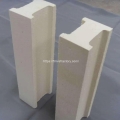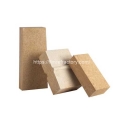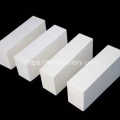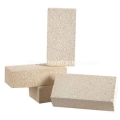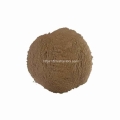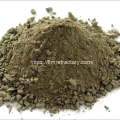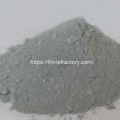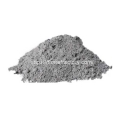- Performance. Innovation. Worldwide. Your trustworthy Refractories Manufacturing Partner--Fireramo
- +86 175 3769 7777
Contact
Contact us on WhatsApp
High Quality Refractory Bricks
Insulation Bricks for Sale
Monolithic Refractory
Structure of Blast Furnace and Hot Blast Furnace and Use of Refractories
Blast furnace is the main equipment for ironmaking, which has the advantages of large output, high productivity and low cost.
The blast furnace smelting process contains complex physicochemical changes. After the raw materials for ironmaking are added from the top of the blast furnace, pig iron is obtained through the processes of preheating, reduction and melting of iron oxides, flow and separation of iron and slag droplets, combustion of coke and generation of gas. Its smelting process is carried out continuously under high temperature.Best Refractories for Blast Furnace
With the development of ironmaking technology in China, the blast furnace is becoming larger, more efficient and longer-lived, and the effective volume of blast furnace has been increased to 4350m³. The daily iron production reaches or exceeds 10,000 tons.
The blast furnace body is divided into parts such as furnace throat, furnace body, furnace waist, furnace belly, furnace cylinder and furnace bottom. Among them, the furnace throat, furnace waist and furnace cylinder for the hollow cylinder, the furnace body and the furnace belly are respectively on the small under the big and on the big under the small truncated hollow conical table, the bottom of the furnace for the cylinder.
Blast furnace parts of the working temperature: furnace bottom, furnace cylinder area for 1450-1800 ℃; furnace belly, furnace waist area for 1400-1600 ℃; furnace body for 600-800 ℃.
Blast furnace in the smelting process, each part of the masonry were subjected to; falling charge friction and impact and other mechanical effects, rising gas contained dust scouring and abrasion; alkali metal oxides steam erosion and infiltration. Therefore, the working conditions of refractory materials for blast furnace are very harsh, and its breakage mechanism varies according to different parts, and the material of refractory materials should be selected accordingly.
Hot blast furnace is one of the main auxiliary equipment of blast furnace. Its purpose is to utilize the heat of blast furnace gas combustion and provide high temperature hot air for the blast furnace with the help of heat exchange effect of brick lattice. Therefore, each blast furnace is generally equipped with 3-4 hot blast furnaces, so that the combustion heating and air supply alternately.
Hot stove is upright cylindrical, furnace body by the heat storage room and combustion chamber composed of two parts, there are also increased mixed air room.
Ordinary internal combustion hot air furnace wind temperature of 980-1100 ℃, improved internal combustion hot air furnace and top combustion hot air furnace wind temperature of 1200-1250 ℃, outside the natural hot air furnace wind temperature up to 1300-1350 ℃.
Hot blast furnace parts of the masonry were subjected to: gas combustion of high temperature; gas into the dust erosion; combustion gas scouring effect and heat exchange process of rapid changes in temperature thermal stress, therefore, the refractory materials used in various parts of the hot blast furnace should be based on the lining of the breakage mechanism to make the appropriate choice.
Blast furnace lining structure
The inner type of blast furnace gradually develops to short and fat. The lining structure of the blast furnace body and the refractory material used are also exploring and developing. In recent years, the bottom of the furnace, the furnace cylinder lining structure more often used technology has a large charcoal block structure, the furnace belly above due to the use of different cooling equipment, the lining structure also has a big difference. At present, the cooling equipment mainly has cooling plate, cooling wall and cooling plate and cooling wall combination of plate and wall combination; small and medium-sized blast furnace in the furnace body, the upper part of the support beam water tank.
Furnace bottom, furnace cylinder refractory materials, both new materials, ultra-microporous carbon blocks and wind mouth silica or silicon carbide combination of bricks, corundum mullite ceramic cup bricks, but also a variety of combinations of corundum, corundum mullite bricks, semi-graphite carbon bricks and so on.

Furnace belly to the lower part of the refractory materials evolution process for the Fireclay brick – high alumina brick – silica brick – synthetic mullite bricks – corundum brick – silicon carbide bricks – silicon nitride combined with silicon carbide bricks – semi-graphite hot-pressed small pieces of carbon bricks, such as new refractories have also promoted the application of the furnace; furnace in the upper part of the body, in addition to the general use of high-density clay bricks, high-density alumina bricks, phosphate combined with high alumina brick refractory materials, there are also in the furnace on the upper part of the 2 -3 section generation. Lining brick cooling wall; generation of lining brick cooling wall even expand the scope of use to include the furnace belly, furnace waist and body of the upper part of the blast furnace masonry; furnace throat has been widely used steel brick or water-cooled steel brick, steel brick and shell filled with castables between the top of the furnace gas hood is commonly used refractory spray coating.
Hot blast furnace type continues to enrich and develop. According to the combustion chamber and heat storage room form different, can be divided into internal combustion, external combustion and top combustion type 3 types. Internal combustion hot air furnace has been developed from a hemispherical roof hot air furnace is now more often used to improve the type of internal combustion hot air furnace, the furnace lining also has a large wall and partition walls and joints, brick roof and other structural forms; external combustion hot air furnace has a new Nippon Steel type, the ground to get the type, the Marqin type; in recent years, the top combustion hot air furnace is also used in the domestic Karuujin-type, and the same time in the 450m ³ blast furnace, part of the use of ball-type hot air furnace.
Specializing in refractory materials for over 20 years, we provide professional refractory solutions for the global high temperature industry.
Related Posts:
- Causes and solutions to cracking of castables after baking
- Enhancing the Medium Temperature Strength of Refractory Castables
- Ways to ensure the accuracy of refractory brick acceptance results
- Acceptance inspection after cement kiln construction
- Three Common Ways of Damage to the Sliding Nozzle for Ladles
Theme By Fireramo
